Review: Apple iPhone 7
Sep 20, 2016, 3:05 PM by Eric M. Zeman
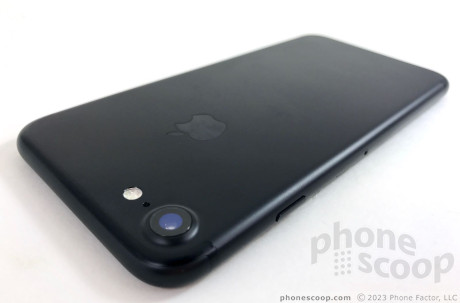
Apple's annual iPhone upgrade manages to include some features — water resistance, better cameras, improved battery life — that are worth considering even if you're coming from a newer iPhone. Together with iOS 10, the iPhone 7 is no doubt a powerful addition to the iPhone family.
Is It Your Type?
Apple's iPhone 7 is here. It's not much different from the 2015 iPhone 6s and 2014 iPhone 6, at least outwardly. Everything on the inside has been overhauled, and, as the saying goes, true beauty lies within. If you don't mind Apple's two-year-old design and get turned on by ramped-up specs — or if you simply need a new iPhone — then the iPhone 7 is probably for you. If you already have an iPhone 6s, then you may want to stick with it until next year's 10-year-anniversary iPhone.
Body
Apple introduced minimal design changes for the iPhone this year, but those changes are just enough to ensure that the new device isn't compatible with many existing iPhone 6/6s accessories. The company has broken from its traditional tick-tock design cycle, wherein in introduces a brand new form factor one year followed by a spec bump the next year, with a tick-tock-tock design that is largely identical to the previous two phones.
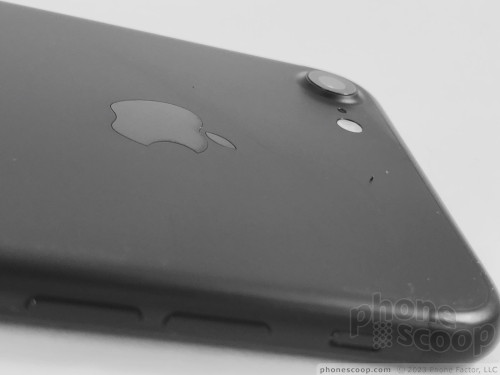
Last year, I complained that Apple's recycled designs are lazy and I feel no differently this year. In fact, I'm even more aggravated that Apple isn't offering its customers something entirely new in 2016. Apple, once the design leader, has allowed its rivals to catch up and in some cases even surpass the iPhone in terms of design. You may love the design of the iPhone 6 and 6s. If you do, then you'll be happy with the iPhone 7.
(If you're wondering why Apple hasn't given the iPhone a fresh design since 2014, many believe the company has a radically new phone on deck for 2017, the 10-year anniversary of the original iPhone. Of course, that's pure conjecture for now.)
The primary physical differences between the iPhone 7 and the iPhone 6/6s are the larger camera module, the dropped 3.5mm headphone jack, the waterproof casing, and the altered colors. Otherwise, the phones share nearly identical footprints, shapes, and appearance. In fact, the iPhone 7 and iPhone 6s have the exact same measurements (length, width, depth), but the 7 does weigh a bit less. Even so, those fancy cases for your iPhone 6/6s won't fit the new iPhones — they'll cover the flash, which is a bit more to the right. You'll have to buy new cases. Again.
The phone is made from aluminum and glass. The metal shell forms the entire rear panel and wraps around to form the side edges. The glass front surface has a slight curve along the edges to help smooth out the joint between two materials. Apple was able to eliminate the two antenna lines that ran across the back of the older 6 and 6s, so the back surface of the 7 is uninterrupted metal. The rounded corners and smoothed-over shape give the phone a somewhat generic look The iPhone 5/5s and 4/4s had more personality as far as I am concerned. There's no doubt the iPhone 7 is a finely-crafted phone, but the appearance is no longer fresh and new.
The iPhone 7 is the smaller of the two iPhones and is a great one-handed device. The 4.7-inch screen makes the iPhone 7 a smaller flagship than most others. I had no trouble reaching the entire screen with my thumb, and found the device incredibly comfortable to hold and use. The curved side edges are smooth against your skin and it's easy to wrap your hand all the way around the 7 and grip it tightly. Even with a case on, this phone will fit into most pockets with no problem.
The materials and build quality are top notch, and I expected nothing less. I was pleased with the feel of the metal and glass, which are fitted together perfectly. These phones come across as expensive (and they are!) But Apple now has plenty of company when it comes to quality. Samsung and HTC are easily on par with Apple, and others, such as Huawei, OnePlus, and ZTE, are breathing down Apple's neck.

Apple is selling the 7 in jet black (glossy), regular black (matte), silver, gold, and rose gold. The first two options have black glass on front, while the other three have white glass. The earpiece, user-facing camera, and a small sensor are plainly visible above the display. The home button / fingerprint sensor is all but invisible on the black models, while it's called out with a shiny metallic rim on the silver, gold, and rose gold models.
I'm not pleased with the amount of bezel surrounding the display. There are thick lines along the side edges and thick bezels above and below. Looking at the competition, it's clear that you should be getting more screen (or a smaller phone) for your buck. Apple needs to get with the program.
Let's talk about the home button. On every iPhone since 2007, the home button has been a physical key that requires people to press it down. The iPhone 7 trades a physical button for a capacitive one. This forces some behavioral changes upon iPhone owners. The capacitive button works together with a new Taptic Engine inside the phone to provide physical feedback every time you press the button. You can dial in the amount of feedback you receive. I found the first option offered too little feedback while the third option offered too much. The middle option worked best for me. It definitely still feels more like a vibration than a button-press, and it took several days for me to get used to it. By the time I was done writing this review, I had mostly assimilated to the new button, but there's a big "but". (More on that in a bit.)
It doesn't help that there are a handful of actions that occur by pressing the home button. A light press wakes the screen. A light press with an extra half-second of pressure will wake the screen and then unlock the phone if you have Touch ID enabled. A long-press opens Siri. Last, a double-press opens Apple Pay. Yes, Apple has defined four different actions based on pressing the home button — and we haven't gotten to the accessibility features that are activated with a triple-press. Seriously, Apple: enough. The number of times I accidentally launched Apple Pay when I intended to wake and unlock the iPhone 7 numbered in the dozens over my first few days with the phone. It's really annoying. (To be fair, however, I've encountered this same issue with Samsung Pay on Galaxy devices. It was annoying on those devices, too.)
As always, the ringer switch is on the top of the left edge. The switch is easy to find and use, and the action is quite good. Few phones have a true ringer switch and it's a nice option to have for quickly switching the ringer to silent/vibrate. The separate volume buttons have good profiles and excellent travel and feedback. They double as shutter buttons when using the camera. I like that the buttons' texture is slightly smoother than the rest of the side edge. The lock button and SIM card tray are housed in the right side of the phone. The 7's smaller size means the screen lock button is really easy to reach. Action on the button is perfect. A tool (not included) is required to eject the SIM card.
One of the iPhone 7's biggest departures from normative smartphone design is the loss of the 3.5mm headphone jack. Surely this is a contentious issue for some and a non-starter for others. Speaking personally, I have switched to Bluetooth headphones for the vast majority of my listening no matter what device I'm using. Even so, I'm still annoyed Apple ditched the jack.
If you want to listen to music via wired headphones, you can use either the included Lightning-tipped earpods (which suck) or the Lightning-to-3.5mm adapter with the regular headphones of your choice. I don't like having to worry about carting the adapter around, especially since I listen to music all over the place. The biggest killer for me is my car: the only AUX input my car has is a 3.5mm jack; it doesn't accept USB-based devices. Apple's decision more or less requires that I purchase spare adapters and leave them in the places I like to plug in my iPhone.
Even if you plan to use the included Lightning earpods, there's still a downside: the iPhone 7 can't charge and play music via the Lightning port at the same time unless you spend extra money on a dock of some sort. (I'd complain a lot less about this issue if Apple used an industry-standard port, such as USB Type-C. Instead, Apple uses its own, proprietary port that other companies have to pay licensing fees to access.)
The bottom edge of the iPhone 7 also has a microphone and speaker. A couple of special screws flank the Lightning port and are plainly visible.
The iPhone 7's rear panel is perfectly flat, save for the camera module. The module is bigger than ever and protrudes significantly. A small microphone hole is next to the camera, and the LED flash is next to the mic. You cannot access the battery. This may be a deal breaker for some people, but inaccessible batteries have become de rigueur for today's flagships.
Last, the iPhone 7 is water-resistant. It carries an IP67 rating for protection against dust and water ingress. Technically, it can sit in up to one meter of water for up to 30 minutes with no damage. This does not make the phone worthy of your next barrier reef scuba-diving adventure. It means the iPhone will probably survive a short dunk in the pool, tub, local stream, or toilet. The iPhone 7 is not rugged and the screen is not shatterproof, so don't go dropping it on concrete. I can say that the iPhone had no trouble handling some time under a running faucet, sitting in the river near my house, and resting at the bottom of a sink full of water.
The iPhone 7 is compact and well-made. I find the design boring, but you may not. Either way, Apple no longer has a stranglehold on high-quality hardware. I do appreciate the waterproof enclosure, but the loss of the headphone jack is grating.
Screen
Like the iPhone 6 and 6s, the iPhone 7 has a 4.7-inch display with Apple's wacky 1344-by-750 pixel resolution. Apple uses LCD panels and the 7's Retina Display looks great. I found it to be bright enough for use both indoors and out, and it delivers excellent color accuracy. The iPhone's screen offers some of the best viewing angles available, with no brightness or color change. Text and imagery appears smooth, even though the display is not full HD. The iPhone's screen still beats most of the competition in overall quality.
Signal
The iPhone 7 is sold in several different wireless configurations. The AT&T/T-Mobile model works with GSM/LTE networks, and the Verizon/Sprint model adds in support for CDMA, too.
I tested the 7 on AT&T's network in the New York City area over the course of several days and it performed above average. The iPhone connected all calls on the first dial and didn't drop/miss any calls. The phone kept a call connected over 30 miles of highway driving, which is no small feat in the NYC area. The iPhone 7 remained attached to AT&T's 4G LTE data network without fail. Not once did it drop the network entirely. The phone didn't drop to 3G, either; even in poor coverage areas it provided 4G LTE service. Data speeds were quite impressive. The iPhone 7 was a champ at streaming YouTube and Spotify and didn't choke on my Instagram feed. Apple has definitely sorted out the wireless technology inside the iPhone so that it is a top performer.
Sound
I'm fairly impressed with the iPhone 7 as a voice phone. Calls are generally clear and free of distortion via the earpiece, though I wish voices had a more pleasant timbre. The earpiece generates enough volume to hear calls in most places you're likely to take the phone. I was able to maintain conversations on busy city streets, and even bustling coffee shops and traveling cars couldn't drown out the iPhone 7's earpiece. People I spoke to through the iPhone 7 said I sounded loud and clear.
The speakerphone introduces a small amount of distortion but also kicks out plenty of volume. You can easily use the iPhone at home or the office, in the car or bus/train with no problem.
Ringers and alarms are very loud, and the vibrate alert is excellent.
The iPhone 7 is the first iPhone to boast stereo speakers. (This is probably why the earpiece and speakerphone push out plenty of sound.) There's a small catch: The bottom speaker is easily putting out two times the sound of the earpiece speaker. Music may be stereo, but it isn't balanced. The bottom end of the phone is much, much louder, skewing the sound towards that end of the device. I tested this over and over with many different pieces of music and there's no doubt in my mind: the earpiece doesn't produce nearly as much volume as the bottom speaker. It's really easy to notice when you hold the phone about a foot from your face — which is where you should be holding it to watch video content. It's a little harder to discern if you put the iPhone 7 on a desk or table and take a few steps back.
The quality of music pushed through the speakers is acceptable for low-volume listening, perhaps, but Alcatel did a better job of adding stereo speakers to its $250 Idol 3 smartphone in early 2015.
I am disappointed, especially considering how great the stereo speakers are on Apple's iPad Pro tablets.
Battery
A few changes in the spec sheet lead to marginally better battery life for the iPhone 7. First, the battery is ever-so-slightly bigger than those of the 6 and 6s. Second, the iPhone 7 has the new A10 processor from Apple with two low-power cores on board to help conserve battery. On what I consider to be a normal day (email, some music, social networking, taking a few photos, watching some video, messaging, and so on) the iPhone 7 easily managed to last from breakfast to bedtime. I had about 20% left at the end of each day — and that's with location services on and a Bluetooth device connected the entire time.
Two things had a noticeable impact on battery life: gaming and shooting video. When I added in some casual gaming and time-lapse videography to my mixed use, battery life dropped by several hours. These activities require the screen and processor to do more work and consume more power. On days with the heaviest use, the iPhone 7 pushed from breakfast to about 9 or 10pm instead of bedtime. You're going to need to keep an eye on battery life if you're a big gamer, but otherwise you should be safe.
The iPhone has a low-power mode to help. You can also directly manage notifications, screen brightness, and other behaviors.
The iPhone 7 does not officially support rapid charging, nor does it support wireless charging, but you can charge it more quickly if you plug it into a higher-wattage iPad charger.
Bluetooth, GPS, NFC, WiFi
The iPhone 7 has Bluetooth 4.2 aboard and it connects to headphones, speakers, cars, and PCs no problem. Phone calls routed to my car's hands-free system sounded very good, as did calls sent to a standard Bluetooth headset. I tested music on a variety of speakers and headphones and can only say that the iPhone 7 produces average-quality music via Bluetooth. I've heard worse and I've heard better. Apple uses its own, proprietary Bluetooth audio codec instead of the more-common aptX codec for wireless music. (Apple's AirPods aren't available yet, so I can't speak to their quality.)
I'm pleased with the accuracy of the GPS radio, which worked well with both Apple Maps and Google Maps. The iPhone 7 pinpointed me quickly and to within 20 feet or so. The device was a fine point-to-point navigation tool and offered accurate directions from A to B. I wish Apple Maps were better at public transportation, but it still covers the basics.
The iPhone has NFC, but it's locked down. The short-range wireless chip is only available to Apple's own Apple Pay service and for pairing with Apple's own AirPod headphones. You can't use the NFC radio to pair with any other Bluetooth accessory.
The iPhone 7's WiFi radio works fantastically well.
Comments
no headphone jack, no purchase
Half-baked phone.
The design is the same as last year, clearly without improvements and even tweaking it just so that people have to buy new cases.
The headphone jack being removed only makes some sense for headphones, and has significant unaddressed disadvantages.
The stereo speakers are neat, but only half work due to the disparity in volumes.
Your description of the screen literally matches my year-old Droid turbo 2, but with the hilarious differences of being lower resolution (albeit with no brightness change from tilting) and not being rugged. Maybe it's the "premium feeling" of glass that changes it. But then, on the turbo 2 there's actually a justifiable screen size, which is a...
(continues)
Stereo audio recording?
Tick tock


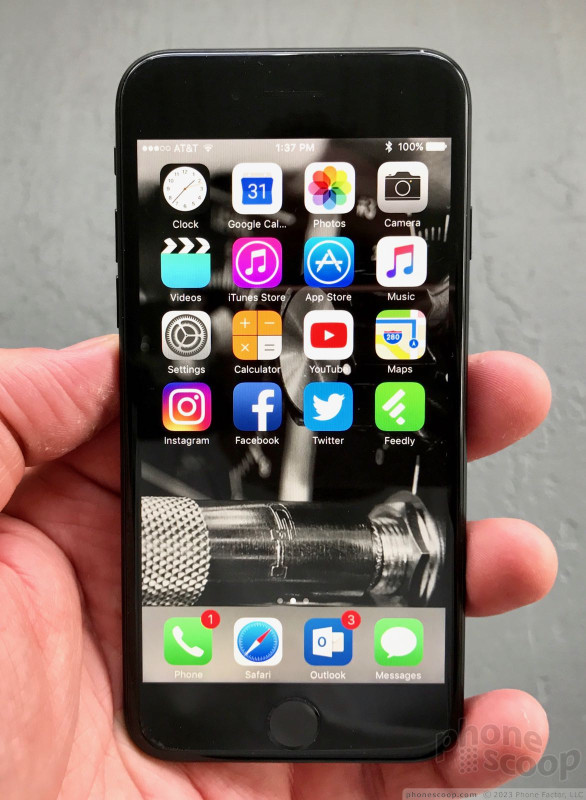









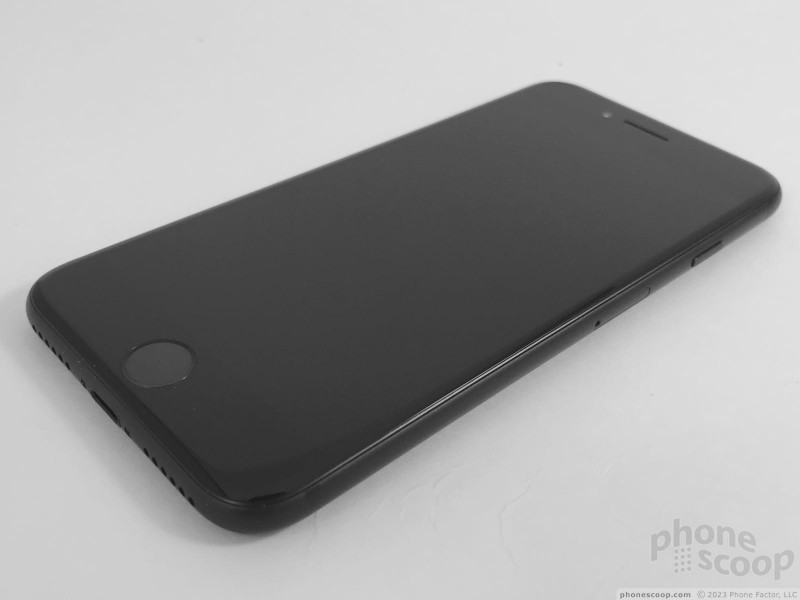










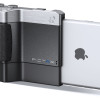 Hands On with the Miggo Pictar Camera Grip for iPhones
Hands On with the Miggo Pictar Camera Grip for iPhones
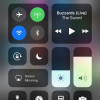 First Look: Apple iOS 11
First Look: Apple iOS 11
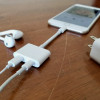 Review: Belkin Lightning Audio + Charge RockStar
Review: Belkin Lightning Audio + Charge RockStar
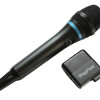 Review: IK Multimedia iRig Mic HD and iRig Mic Field
Review: IK Multimedia iRig Mic HD and iRig Mic Field
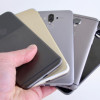 5 Best Unlocked Smartphones
5 Best Unlocked Smartphones
 Apple iPhone 7
Apple iPhone 7



